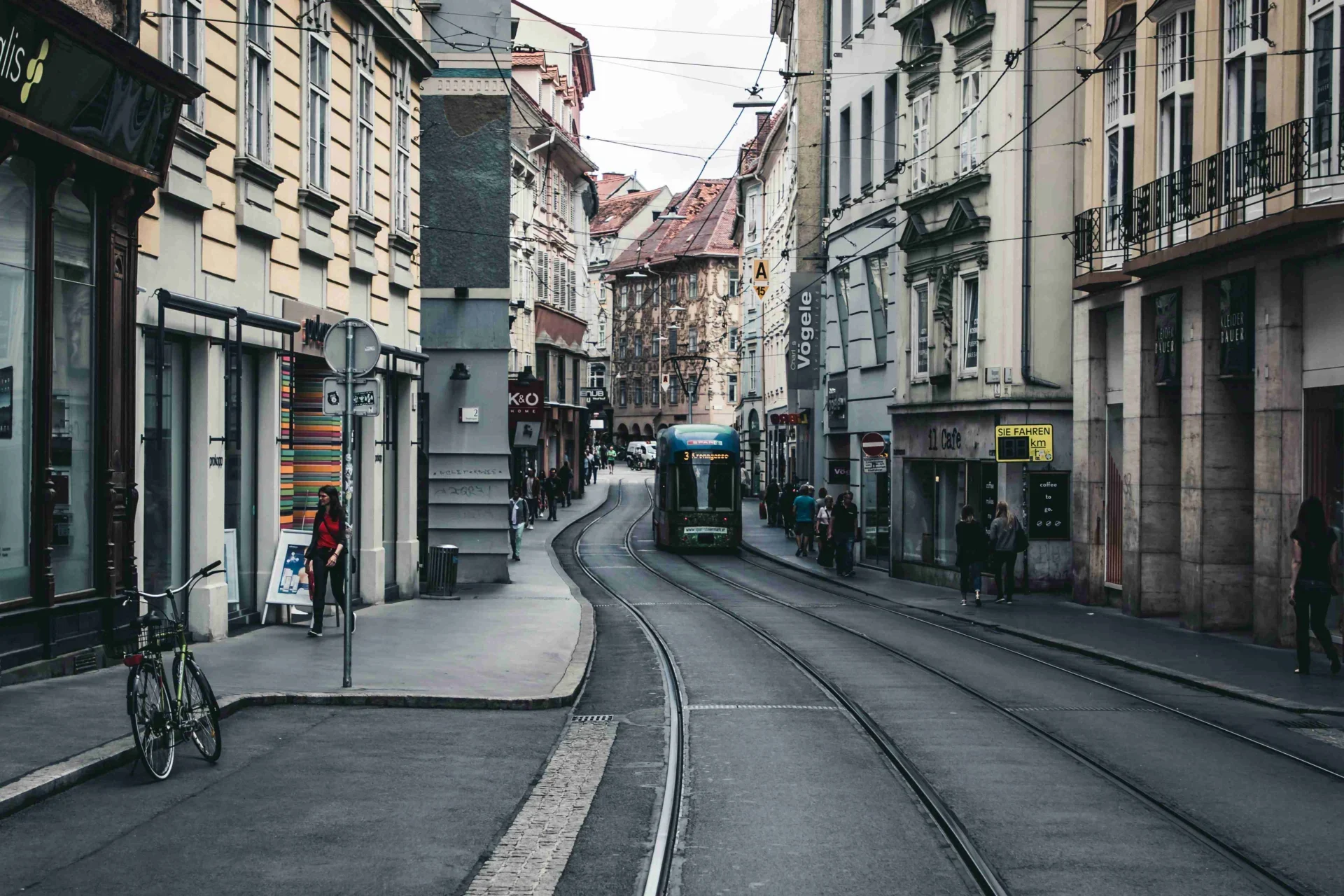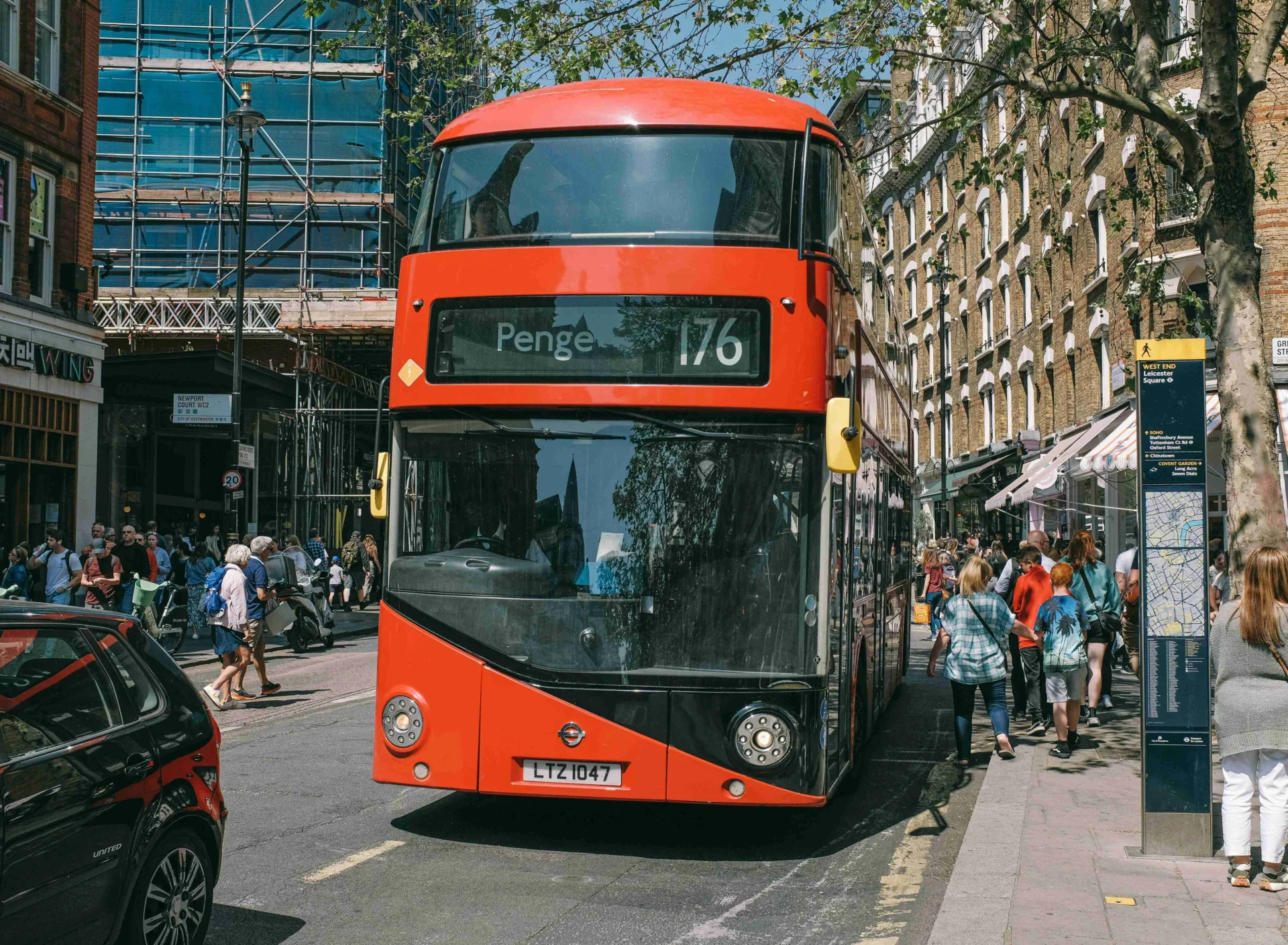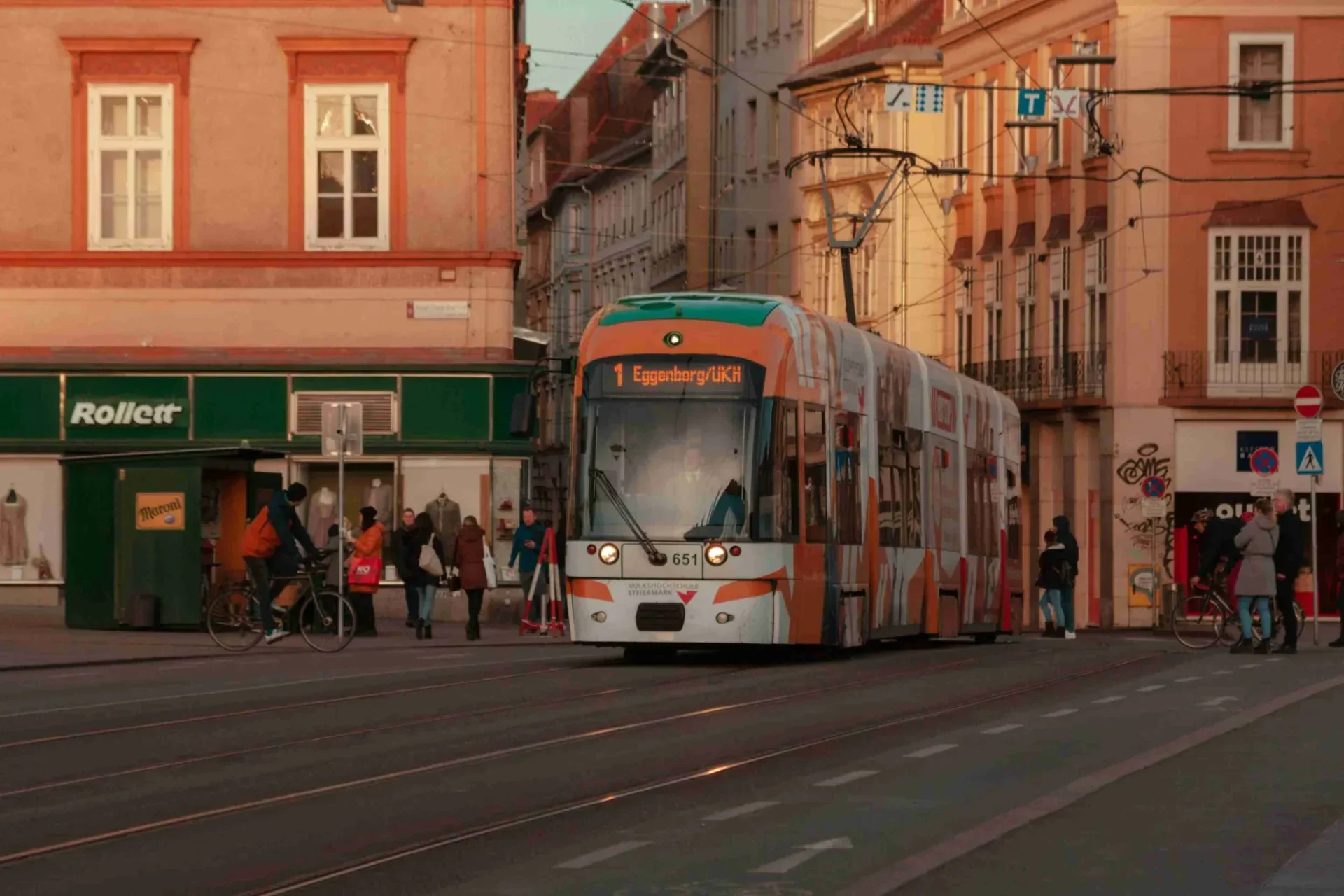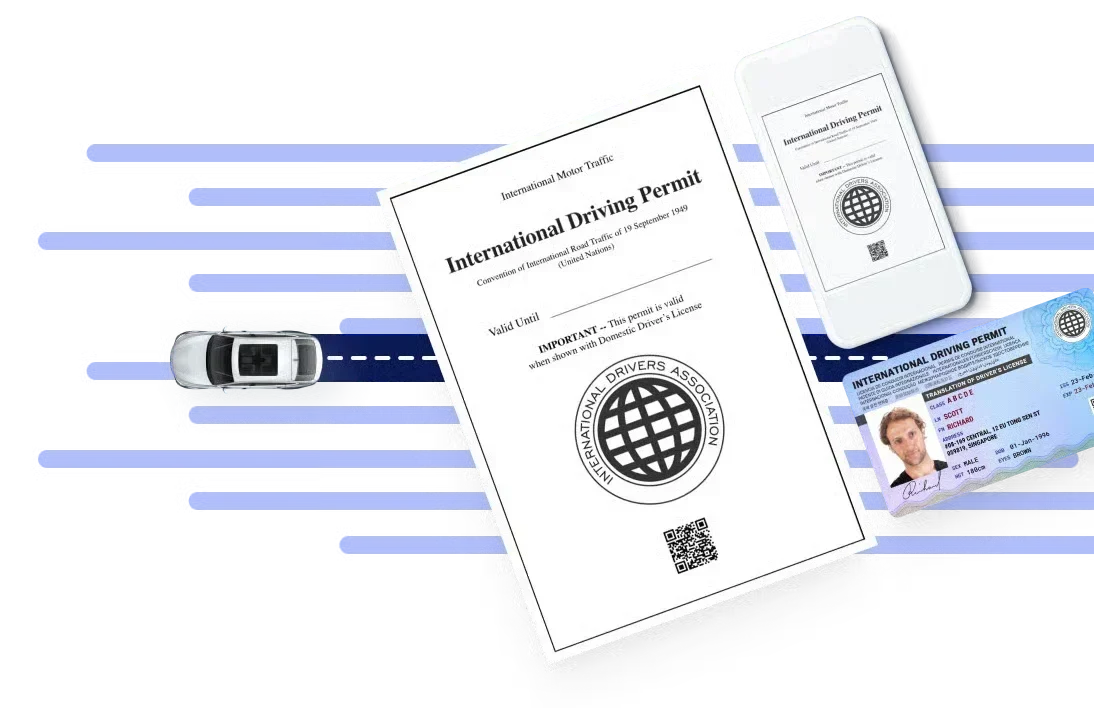Austria offers a range of convenient public transport options for travelers , making exploring the country’s stunning cities and landscapes easy. Efficient bus, tram, and train networks provide seamless connections in major hubs like Vienna, Salzburg, and Innsbruck. Austria’s national railway, ÖBB, and private Westbahn trains link cities like Wien, Linz, and Salzburg, while S-Bahn services connect regional areas.
Whether buying tickets for urban trams or trains to the Alps for a ski trip, Austria’s public transport is reliable and accessible for any adventure.

Source: Photo by Quaritsch Photography on Unsplash
Trains in Austria
Trains are one of the most popular and efficient ways to travel across Austria , offering scenic journeys and reliable service. The Austrian Federal Railways, ÖBB (Österreichische Bundesbahnen), operates most of the country’s train routes. It connects major cities like Vienna, Salzburg, Innsbruck, and Linz, as well as small towns and ski resorts.
- ÖBB: Austria’s national railway service provides high-speed Railjet trains, regional S-Bahn services, and night trains across the country and into neighboring countries. The ÖBB trains are comfortable, punctual, and perfect for longer journeys.
- Westbahn: A private competitor to ÖBB, Westbahn operates between Vienna and Salzburg, offering a budget-friendly alternative with frequent departures. Travelers can compare ÖBB and Westbahn to find the best option for their schedule.
- Ticketing: Tickets can be easily purchased at stations, online, or via mobile apps. For tourists, ÖBB offers the Klimaticket, a pass that provides unlimited travel on public transportation in Austria for a specific period.
Railway Fare Prices in Austria and How to Get Tickets
Austria has an extensive and well-developed train network, offering a range of ticket options for different travel needs. Here’s a guide to train prices and how to purchase tickets:
Train Ticket Prices
Train ticket prices in Austria depend on several factors, including the distance, type of train, and how early you book. Generally, train prices can be broken down as follows:
- Standard Tickets: These are the most flexible, allowing changes and cancellations. They can be more expensive, but they are flexible enough for last-minute travel plans.
- Discounted Tickets (Sparschiene): These are discounted tickets available for domestic and international routes, offering significant savings. The earlier you book, the cheaper the price. However, they are often non-refundable and non-changeable.
- First-Class Tickets: For those seeking extra comfort, first-class tickets are available on most trains. They offer larger seats, more space, and additional services like free Wi-Fi and power outlets.
For domestic travel, prices can range from:
- Short trips: €10–€30 for routes like Vienna to Graz or Salzburg to Linz.
- Long-distance routes: €25–€60 for journeys like Vienna to Innsbruck or Salzburg to Vienna.
How to Get Railway Tickets
Train tickets in Austria can be purchased through several convenient channels:
1. ÖBB Website and App: Austria’s main train operator, ÖBB, allows you to purchase tickets online through their website or mobile app. This is often the easiest and most convenient way to book tickets, especially for discounted fares like the Sparschiene.
2. Train Stations: Tickets can be bought at ticket machines or counters at any major train station in Austria. Stations like Vienna Hauptbahnhof, Salzburg Hbf, and Innsbruck Hbf have multilingual ticket machines and staff to assist you.
3. Mobile Apps: ÖBB’s mobile app and the ÖBB Scotty app help users check timetables, book tickets, and even track live train updates. The apps often offer discounts for mobile users.
4. Ticket Machines: Ticket machines are found in train stations. They accept cash or cards and are available in multiple languages. They are quick and easy to use for both short—and long-distance tickets.
Additional Tips
- Advance Booking: Booking tickets in advance, especially for long-distance travel, is recommended as early booking discounts can save money. The Sparschiene tickets are often the most affordable but can sell out quickly.
- Seat Reservations: Seat reservations are sometimes required but are recommended during peak travel times or on popular routes, especially for long journeys. They can be purchased for a small additional fee when buying your ticket.
Ticket Validity
- Tickets Must Be Validated: If you’re using regional or local trains, remember to validate your ticket before boarding by stamping it at the validation machines at train stations.
- Mobile Tickets: When booking online or via the app, your ticket is usually sent directly to your phone, and you only need to show it to the conductor during the trip.

Source: Photo by Frederic Köberl on Unsplash
Buses
Extensive Bus Network in Austria
Austria’s bus network is vast, reaching areas sometimes inaccessible by train. This makes buses an excellent choice for exploring rural areas or connecting between regional train stations. The bus system is vital in regions where train services might be limited, offering flexibility for those wishing to visit off-the-beaten-path destinations.
Regional Buses
Cities like Salzburg, Linz, and Graz offer robust regional bus networks that connect urban centers with nearby towns and tourist attractions. In Lower Austria and Upper Austria, buses ensure that even the more remote parts of the country are easily accessible. Bus stops are well-marked, and timetables are reliable, making it easy to plan your journey.
FlixBus and Long-Distance Travel
For longer journeys between cities or neighboring countries, FlixBus is a popular and affordable option. FlixBus operates routes connecting major hubs like Vienna, Graz, Innsbruck, and even beyond Austrian borders. Their buses often feature free Wi-Fi and comfortable seating, making long-distance bus travel a pleasant experience.
Local City Buses in Vienna and Salzburg
In larger cities like Vienna and Salzburg, local buses play a crucial role in complementing trams and U-Bahn services . The Vienna public transport system is particularly well-developed, with buses providing essential connections between suburban areas and the city center.
City buses run frequently and are integrated with other forms of public transport, ensuring smooth transitions between trains and buses. Bus routes in Vienna are displayed at bus stops, and tickets can be bought via mobile apps, online, or at ticket machines in main stations.
Public Bus Tickets in Austria and How to Get Them
Austria has an extensive public bus network connecting cities, towns, and rural areas, making it a convenient option for getting around, especially in places with limited train routes. Here’s an overview of bus tickets and how to obtain them:
Types of Public Bus Tickets
1. Single Tickets: These are the most common type of bus ticket, ideal for one-way trips. Prices vary depending on the distance and the region. For example, within cities like Vienna, Graz, or Salzburg, single tickets for short trips are relatively inexpensive (around €2–€3).
2. Day Passes: Many cities offer day passes, which allow unlimited travel on buses, trams, and sometimes even regional trains within the town or region for 24 hours. In Vienna, for example, a day pass (24, 48, or 72 hours) provides access to all public transportation services within the city.
3. Weekly and Monthly Passes: These are great for extended stays or frequent travelers. They allow unlimited use of public transport, including buses, within a city or region for a specified period. Prices vary by city, but monthly passes in Vienna start at around €51.
4. Klimaticket: This comprehensive pass allows unlimited travel on all public transportation in Austria, including buses, trams, and trains. It’s available for different durations (weekly, monthly, or annually) and is ideal for those planning to explore multiple regions or cities by public transport.
Prices
- Single Ticket Prices: In major cities, single bus tickets typically cost between €2 and €3. Regional and long-distance bus ticket prices depend on the distance and can vary.
- Discounts: Students, seniors, and children often receive discounts on bus tickets. Check local transport authority websites for specific details.
Trams and City Transport
Vienna boasts one of the most extensive tram networks in the world, with over 30 lines crisscrossing the city’s landscape. Trams are a favored mode of transport , allowing residents and tourists to traverse the city easily. The Vienna public transport system is user-friendly, with ticket prices clearly displayed and options for purchasing tickets at stations or via mobile apps.
- Ticketing Options: Travelers can buy single tickets, which are valid for any form of public transport within a specified duration. This makes it convenient to hop between trams, buses, and the U-Bahn. For those who plan to use public transport frequently, monthly or annual passes are available, providing unlimited travel within designated zones at a lower price.
- Ease of Use: The trams in Vienna are practical and provide a scenic route around the city. They pass by iconic landmarks, parks, and vibrant neighborhoods, allowing travelers to enjoy the sights without the hassle of navigating traffic.
Graz and Innsbruck: Efficient City Transport
While Graz and Innsbruck are smaller cities, their tram systems are equally efficient and user-friendly.
- Graz: The tram network in Graz effectively connects key tourist sites and neighborhoods. With a relatively minor number of lines compared to Vienna, the trams in Graz still offer a reliable option for locals and visitors. The system is well-integrated with bus routes, ensuring comprehensive coverage throughout the city and its outskirts.
- Innsbruck: In Innsbruck, trams serve the city and provide connections to surrounding mountain areas and ski resorts, especially during the winter months. The local tram system facilitates access to recreational activities, making it easier for residents and tourists to travel to the mountains without needing a car.
Seamless Integration with Other Transport Forms
Austria’s transport network seamlessly integrates trams with trains and buses, making it easier to travel across the country. This is particularly advantageous for travelers exploring more than just the urban centers.
- Connections: Tram stops are near major train stations, allowing passengers to transfer quickly between trams and regional trains. The well-established public transport system ensures that even remote rural areas are accessible via trams and buses, particularly in Lower Austria and Upper Austria.
- Transport Services: Passengers can rely on the ÖBB Scotty app to check tram and bus timetables, ensuring they stay informed about departure times and routes. This app is a valuable tool for both locals and tourists, making planning journeys and travel easy.
Practical Tips for Using Trams in Austria
Traveling on trams in Austria is straightforward and convenient, whether you use them as your primary mode of transport or to connect with other forms of public transport.
- Ticket Purchase: Tickets can be bought at tram stops, online, or through mobile apps. It’s essential to validate your ticket before boarding, as tickets must be stamped for them to be valid.
- Free Wi-Fi: Many tram services in Vienna offer free Wi-Fi, enhancing the travel experience by allowing passengers to stay connected while moving.
- Luggage Policy: If you travel with luggage, Austria’s public transportation system accommodates it. However, be mindful of space during peak hours.
Tram Fare Prices and Where to Buy Tickets
Vienna (Wien)
Vienna has one of the largest tram networks in the world, and public transport tickets are valid for trams, buses, and the U-Bahn (metro).
- Single Ticket: €2.40 (for adults) for a single trip within Vienna’s core zone (Zone 100). This ticket is valid for trams, buses, and U-Bahn travel.
- Day Passes:
- 24-Hour Ticket: €8.00 for unlimited trams, buses, and metro travel within 24 hours.
- 48-Hour Ticket: €14.10 for unlimited travel over two days.
- 72-Hour Ticket: €17.10 for three days of unlimited travel.
- Weekly Ticket: €21.20 for unlimited travel on all city transport for one week.
- Monthly Pass: €51.00 for unlimited travel for the entire month.
Graz
Graz also has an extensive tram network, making it easy to get around the city.
- Single Ticket: €2.70 (valid for 1 hour of travel across the public transport network).
- Day Pass: €5.70 for unlimited travel for one day.
- Weekly Pass: €14.90 for unlimited travel within one week.
- Monthly Pass: €47.10 for unlimited travel for one month.
Innsbruck
Innsbruck’s public transport includes trams, buses, and a regional railway network.
- Single Ticket: €2.90 for a one-hour trip on public transport within the city.
- Day Pass: €6.40 for unlimited travel for one day.
- Weekly Pass: €18.70 for seven days of unlimited travel.
- Monthly Pass: €51.70 for unlimited travel for one month.
Salzburg
Salzburg’s tram and public transport network provides convenient travel within the city.
- Single Ticket: €2.20 for adults, valid for one trip.
- Day Pass: €4.90 for a 24-hour ticket.
- Weekly Pass: €16.90 for unlimited travel for one week.
- Monthly Pass: €50.00 for unlimited travel within one month.
S-Bahn and Urban Rail: Austria Public Transport Network Musts
Austria’s S-Bahn (suburban train) system is an integral part of the country’s public transport system, offering fast and efficient connections between urban centers and their surrounding suburbs. This network is particularly advantageous for those exploring areas beyond the main cities, making planning day trips to nearby towns and scenic regions easier.
Vienna’s S-Bahn: A Key Component of Urban Transport
In Vienna, the S-Bahn is a vital component of the Vienna public transport network, connecting the city center to various outlying regions, including Vienna International Airport. The S-Bahn provides a reliable way of traveling around Vienna and is directly linked to key destinations.
Convenience for Travelers
With regular timetables and frequent service, the S-Bahn is an essential option for travelers. Passengers can easily use public transport to reach the airport or explore suburban attractions, significantly enhancing travel in Austria. For instance, visitors can take the S-Bahn from the city center to the airport in under 30 minutes, making it a time-efficient choice.
Ticketing Options
A single ticket allows for travel on all forms of public transport, including the S-Bahn, trams, and buses. Monthly or annual passes are also available, which can be more economical for frequent travelers. Tickets can be bought at stations, online, or via mobile apps, allowing seamless travel planning.
Innsbruck and Salzburg: Smaller S-Bahn Networks
Innsbruck and Salzburg also feature S-Bahn services connecting central urban areas with regional destinations.
- Innsbruck: The S-Bahn in Innsbruck offers quick access to scenic spots in the surrounding Tyrolean mountains, making it an excellent choice for outdoor enthusiasts looking to engage in activities like skiing, hiking, and mountain biking. The connections between the city and its ski resorts make it easier for locals and tourists to enjoy Austria’s stunning natural landscapes.
- Salzburg: Like Innsbruck, Salzburg’s S-Bahn network connects the historic city center with nearby attractions, including Lower Austria and picturesque towns. These services enable residents and visitors to conveniently explore the region’s cultural and natural offerings, enhancing their experience of exploring Austria.
Seamless Integration with Other Transport Systems
The S-Bahn operates alongside other forms of public transport, including local buses and the U-Bahn (subway), creating a comprehensive transport network that ensures accessibility across Austria.
- Connections: The S-Bahn provides easy transfers to local buses at various bus stops, making it simple to reach destinations that may not be directly served by trains. The S-Bahn integrates seamlessly with long-distance trains, allowing travelers to explore rural areas and cities across Austria efficiently.
- Free Wi-Fi and Travel Services: Many S-Bahn trains offer free Wi-Fi, enabling passengers to stay connected while traveling. With the ÖBB Scotty app, travelers can access real-time information about train and bus routes, making it easier to plan journeys and check for potential delays. This app can also help travelers book tickets and ensure that they check the timetable before embarking on their journey.
Practical Tips for Using the S-Bahn in Austria
Traveling on the S-Bahn is straightforward and convenient, providing a way to explore both urban and suburban destinations in Austria.
- Luggage Policy: The S-Bahn allows passengers to carry luggage, making it convenient for those heading to the airport or embarking on longer journeys. However, during peak travel times, travelling slowly and being mindful of space is advisable.
- Seat Reservations: While optional on the S-Bahn, seat reservations can be helpful during busy or long-distance journeys, especially if traveling with larger groups or significant luggage.
- Exploration Beyond the Cities: The S-Bahn is ideal for those wishing to travel beyond major cities like Vienna, Salzburg, and Graz. Using the S-Bahn, travelers can easily explore the beauty of the Austrian countryside, including Upper Austria and West of Austria, home to charming towns and stunning landscapes.
Ticket Prices
Austria’s S-Bahn and urban rail systems offer affordable and efficient travel within and around major cities like Vienna, Graz, Salzburg, and Innsbruck. Single tickets range from €2.20 to €2.90, with day passes costing around €4.90 to €8.00 for unlimited travel.
Weekly and monthly passes are also available, offering great value for frequent travelers. Tickets can be purchased at stations, online, or via mobile apps like ÖBB Scotty and must be validated before use. Discounts are available for students, seniors, and those with the Klimaticket for unlimited access across Austria.

Source: Photo by Huy Phan on Unsplash
Public Transportation System in Ski Regions
Austria is renowned for its exceptional ski resorts, and the country’s efficient public transport network makes access to these alpine destinations easy .
Trains to Ski Resorts
The ÖBB (Austrian Federal Railways) and regional rail services connect to popular ski destinations like Kitzbühel, St. Anton, and Zell am See. Special ski trains are available during the winter, allowing travelers to transport their ski equipment while enjoying scenic views quickly.
Ski Buses
In many ski regions, ski buses operate regularly, connecting train stations to resorts. These buses provide seamless transport for winter sports enthusiasts, often running for free with a valid ski pass. This integration of trains and buses makes it convenient for visitors to access the slopes and enjoy Austria’s renowned winter sports offerings.
Renting Cars and Other Transport Options Around Vienna
While Austria boasts a highly efficient public transport system, renting a car can enhance your travel experience, especially for those looking to venture into remote areas or travel at their own pace. The country’s road infrastructure is excellent, making driving between cities and exploring mountain regions easy.
Car Rentals
In major cities like Vienna and Salzburg, numerous car rental options are available, including international companies and local providers. It’s essential to check if a vignette (a road toll sticker) is required for driving on Austrian highways, as this is mandatory for most motorways. Rental cars typically come equipped with GPS, and many companies offer the option of adding additional drivers, child seats, and insurance coverage for peace of mind.
Driving in Austria
Driving in Austria is straightforward, with well-marked roads and scenic routes. The country’s motorways efficiently connect major cities and tourist destinations. If you’re venturing into the Austrian Alps, be prepared for winding mountain roads and check the weather conditions, especially in winter. Parking in city centers can be challenging, so consider utilizing public parking facilities and park-and-ride options where available.
Cycling
For eco-conscious travelers, cycling is a fantastic way to explore Austria. The country is renowned for its bike-friendly infrastructure, with extensive cycling paths that cater to all levels of cyclists. Cities like Vienna and Graz have well-maintained bike lanes, and cycling along the scenic Danube River offers breathtaking views. Many towns provide bike rental services, making exploring at your leisure while enjoying the fresh air and stunning landscapes easy

Source: Photo by Niels Baars on Unsplash
Tips for Travelers Taking the Public Transport in Austria
Here are some helpful tips for taking public transportation in Austria:
- Buy Tickets in Advance: Purchase your tickets at stations, online, or via apps like ÖBB Scotty or Westbahn. Tickets must be validated before boarding.
2. Use Day or Weekly Passes: If you plan to use public transport frequently, day, weekly, or monthly passes offer great value, especially in cities like Vienna and Salzburg.
3. Punctuality Matters: Austria’s trams, trains, and buses are punctual. Be sure to arrive a few minutes early at your stop or station.
4. Validate Your Ticket: Always validate your ticket before boarding by stamping it at the machine, or you may be fined.
5. Plan with Timetables and Apps: Use the ÖBB Scotty app or city-specific transport apps to check timetables, routes, and real-time updates.
6. Mind the Luggage: Public transport is spacious, but be mindful of luggage space, especially during peak travel times. Larger stations often have storage lockers.
7. Travel During Off-Peak Hours: For a less crowded experience, try to use public transport outside rush hours (early morning and late afternoon), or consider renting a car. Just make sure to follow traffic laws in Austria.
8. Free Transport in Some Cases: If you’re visiting ski resorts or other tourist areas, check if free shuttle buses with ski passes or local tourist cards are available.
FAQs About Public Transportation in Austria
Are there special passes for tourists?
Yes, the Klimaticket offers unlimited travel on buses, trams, and trains across Austria for a set period. Many cities also provide 24-hour or multi-day tourist passes.
Do I need to validate my ticket?
Yes, if you buy a paper ticket, it must be validated at the machines before boarding. E-tickets purchased online or through apps don’t require validation.
How reliable is public transport in Austria?
Austrian public transport is very punctual, with well-maintained timetables. Stop at the station a few minutes early to avoid missing your ride.
Can I use public transport to reach ski resorts?
Yes, trains and buses offer connections to many popular ski destinations. Some resorts also provide free ski buses with a valid ski pass.
Is renting a car a good option for tourists in Austria?
Renting a car is ideal for exploring remote areas or the scenic Austrian Alps. Renting a car in Austria , especially in major cities like Vienna, Salzburg, and Innsbruck, is easy. Be aware that vignettes (road toll stickers) are required on highways.
What documents do I need to rent a car?
Tourists need a valid driver’s license, a passport, and a credit card for car rentals. Non-EU citizens may need an international driving permit (IDP) or driving permit abroad .
Are Austrian roads safe for driving?
Yes, Austria’s roads are well-maintained and signposted. In snow-prone areas, winter tires are mandatory from November to April. Be cautious on mountain roads and check local weather conditions.
Do I need travel insurance when renting a car?
While basic insurance is usually included with rentals, it is advisable to get additional insurance that covers damage, theft, and personal injury.
Is Austria bike-friendly?
Yes, Austria has extensive cycling paths, especially in cities and scenic areas like the Danube River, making cycling a great way to explore.
Wrapping It Up
In conclusion, Austria’s public transport system is the best way to get around Austria, offering an efficient, reliable, and eco-friendly way to explore its cities and scenic regions. With various ticketing options, including day passes and the comprehensive Klimaticket, getting around is convenient and affordable. Whether you rely on well-connected trains, trams, and buses or choose the flexibility of renting a car to discover more remote areas, traveling through Austria is simple and enjoyable for all visitors.







